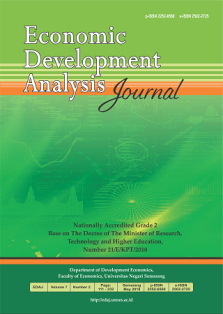The Impact of 900VA Electricity Tariff Adjustment on Household Consumption
Abstract
The aim of this study was to analyze the impact of 900 VA electricity tariff adjustments on household consumption patterns in East Borneo. This policy potentially increased the poverty, considering that in the last few years, East Borneo had experienced a contraction in economic growth. The analysis of this study used the Linear Approximation of Almost Ideal Demand System (LA/ AIDS), and the concept of elasticity to reach the objectives of this study using Susenas in 2016 and 2017. The results of the analysis showed that the policy indirectly had more impact on all residential electricity customers rather than on 900 VA and above customers. The residential electricity customers would generally be more responsive to reduce the non-staple consumption in addition to respond the subsidies revocation, compared to 900 VA and above users. This circumstance was certainly related to the economic condition of 900 VA and above residential electricity customers who were more capable, so the food needs were no longer a household staple. Meanwhile, the middle economic households would continue to maintain the nutritional status of the household by continuing to consume high protein food sources (fish / meat / eggs / milk). Meanwhile, based on the type of region, the revocation of 900 VA subsidies and the increase in household non-subsidized tariffs for rural was more responsive than urban households. This was understandable since the level of electricity dependence


